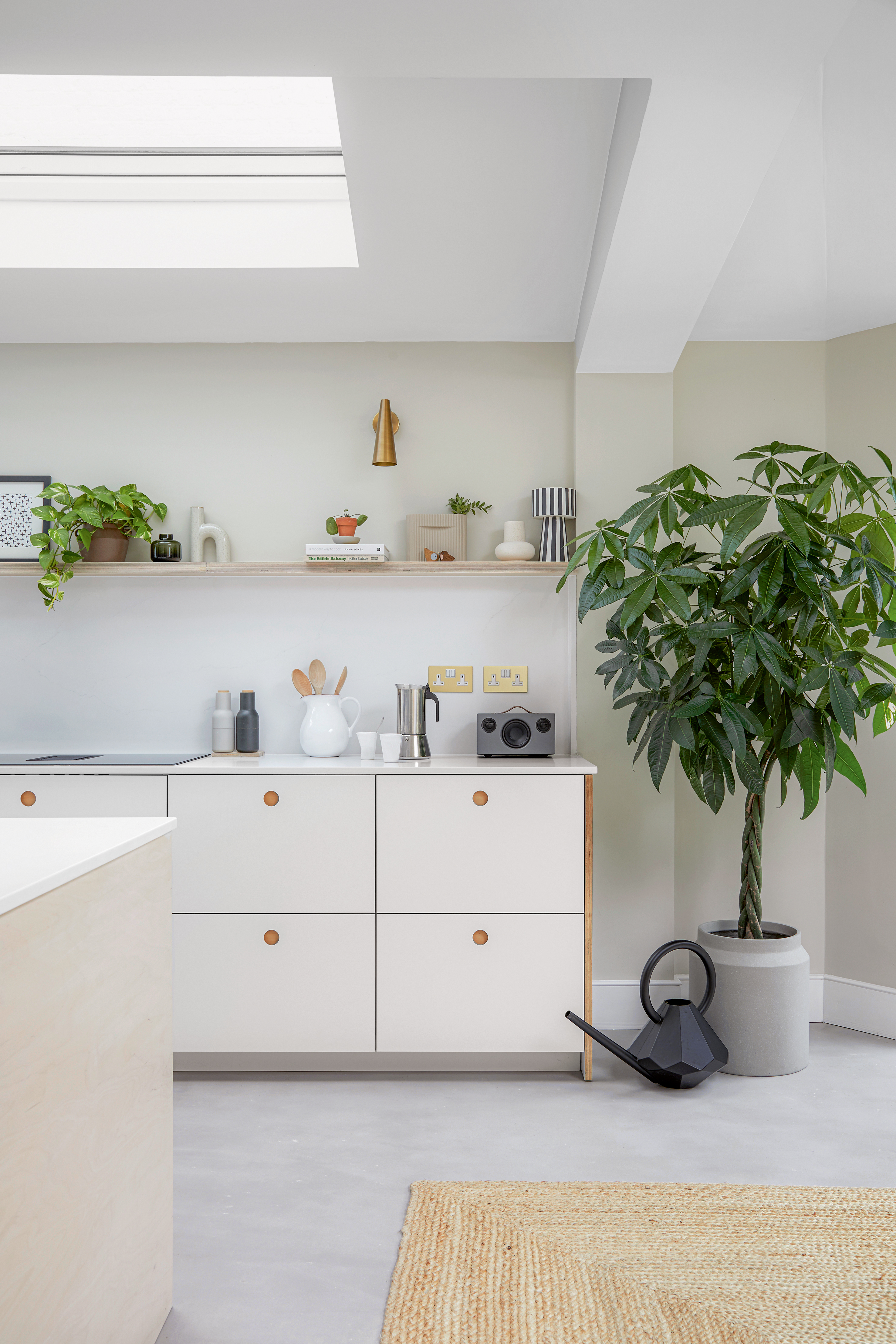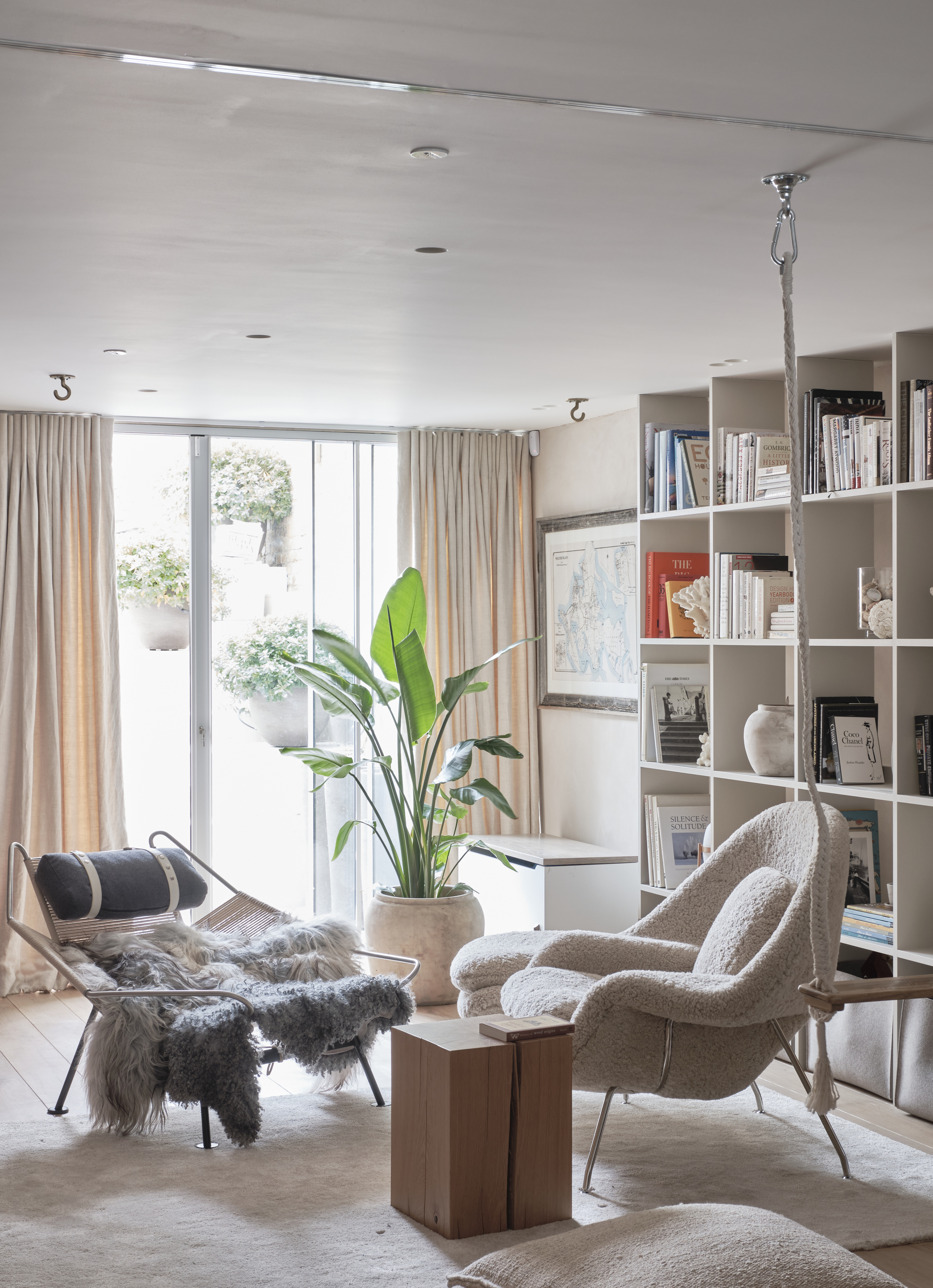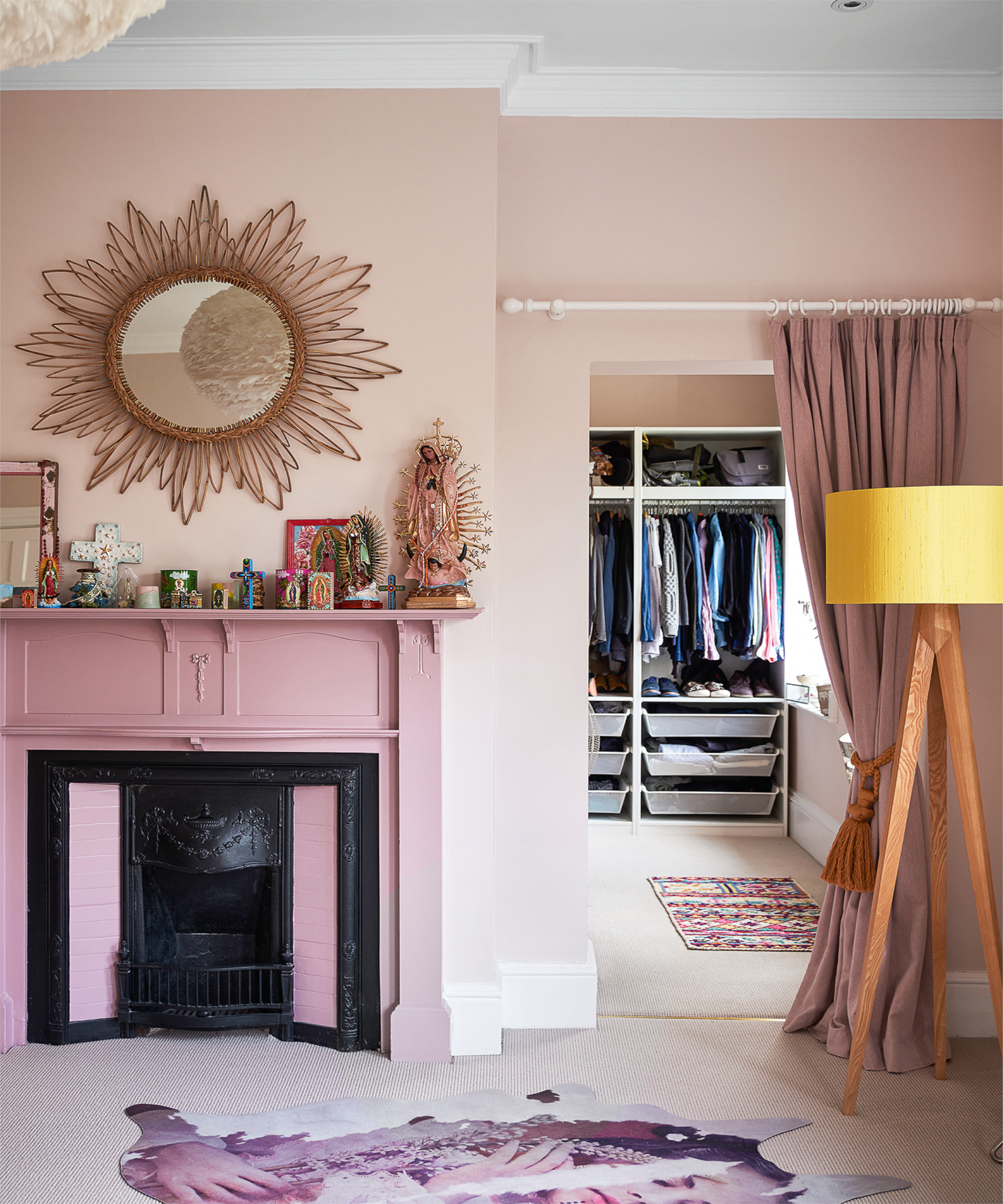How to start decluttering – 10 simple steps anyone can do that will lead to an organized home
Need some motivation to get organizing your space? Our expert guide to how to start decluttering breaks it down to make the prospect slightly less daunting


When it comes to any kind of household chore, we all know the first step is the hardest. Often, even the idea of opening the shoe cabinet and trying to give it some kind of order is too overwhelming to even think about. But alas, 'tis the season to declutter right? Potential guests traipsing through your home, judging every stray trainer and unorganized kitchen cupboard. Plus, Christmas goes hand in hand with accumulating more stuff, so of course, it makes sense to have a clear out before the New Year.
But where do you even start? Well, might we suggest right here, because we've asked the cleaning, organizing, and decluttering experts for some easy steps you can make to get started. From 5-minute jobs you can do while you wait for the coffee machine, to totally overhauling a room in an afternoon, no matter how much time you have we are sure you will find some motivation to declutter your home with these tips...
1. Remind yourself why you want to declutter

Nothing motivates you more to start decluttering than a good reason. Now for us that's usually guests, but take the long view too – how will it positively effect your life if you declutter your home?
'Before jumping in with the recycling bags, take some time to understand your reasons for wanting to organize your home.' explains Sue Spencer, founder of A Life More Organised. 'This is an opportunity to hit pause and consider how you'd like to be living your life going forward. Your home should support you in living your life the way you want to live it rather than getting in the way of the things you'd like to do.'
'Think about all the benefits of having a clutter-free space.' adds professional organizer and founder of Homefulness Caroline Caron Dhaouadi. 'A cluttered home overwhelms our already overloaded brains with too much sensory information. This can cause irritableness, increased stress levels, and even makes you feel ashamed or embarrassed about your home when guests come round. When your home is cluttered, your mind can become cluttered too not to mention stressed, when you are unable to locate something amongst the piles of things you own.'
We love this idea too, from Marcella Caricasole of Think Tidy, 'Write down the end goal and put it in a visible place as a constant rational reminder of why we want to declutter. It could be the need for more space, getting rid of old and welcoming new, taking control of our home, helping others who don't have much...whatever it is having a reminder keeps us on the track.'
2. Make a plan
Often starting to even think about having a declutter can feel overwhelming. So go back to basics and make a list. Use your phone or a notepad and physically write down the things you would like to declutter. Go small too. Rather than 'declutter kitchen', write down all the different tasks within that you want to achieve, like to how to organize your kitchen drawers. Lists are motivating, and ticking things off lists feels good, so even just seeing your tasks written down can make it look more manageable and motivate you to get started.
The Livingetc newsletters are your inside source for what’s shaping interiors now - and what’s next. Discover trend forecasts, smart style ideas, and curated shopping inspiration that brings design to life. Subscribe today and stay ahead of the curve.
'In the initial instance of decluttering and organizing, when everything seems a little chaotic and probably overwhelming, write a plan of what you want to get organized. Order it in preference of most bother to you but easy to fix, to least bother to you, and harder to fix. From there you can start on the easy, big wins that then make you want to continue and then work on the harder not so worrying areas when you feel more in control.' explains Siân Pelleschi, President of APDO and founder of Sorted!
4. Start small and treat it as a process
'The key to effective decluttering is to break it into small, manageable chunks,' advises Catharina Björkman, Scandi lifestyle expert at Contura. 'Don’t start with big tasks such as clearing out the loft or garage, but instead, set yourself small challenges that can be quickly crossed off. You could start by reorganising the spice rack, sorting out your sock drawer, going through your skincare products, or organizing your bathroom cupboards. It may only take you 10 minutes, but you will feel a great sense of accomplishment. Starting with small and easy decluttering tasks will help build up an eagerness to tackle bigger jobs.'
'Our advice is to think of decluttering as a steady – sometimes even slow – process, rather than a quick blitz of your home followed immediately by the inevitable acquisition of more items. It’s about creating lasting change and scheduling in regular little-and-often decluttering sessions. This will reduce the risk of feeling overwhelmed and increase our likelihood of completing the task at hand.' she adds.

4. Set timers
This is an approach we've tried and tested and is a great way to get started when trying to organize a room but feeling slightly overwhelmed. Set an alarm for as long as the time you have – might be 5 minutes, might be 60 and just see how much you can get done in that time.
'I am a great believer in setting a time limit on each task and 20 minutes is the sweet spot for me,' says Sharon McNulty founder of Joyful Spaces. 'I am so productive for those 20 minutes and know that when the alarm goes, I can take a break. So I put the phone on silent, put my favorite music on, and get started. Often, I then get into a flow and want to keep powering through.'
'You could declutter a drawer or cupboard while your dinner is in the oven. Set your timer and choose the drawer or cupboard. Empty all the contents out, discard broken or unwanted items, then replace only those items you love or need.' she adds.
'In a few short weeks, you will have decluttered the contents of your entire kitchen! You will then use the 20 minutes to gather similar items together – electrical items, ovenware, baking items etc. Once this is done, the final part will be storing them together, with easy access to those used most often. All this done in 20 minutes each day.'
5. Begin with something you are going to notice
For example, while your under-stairs storage could really do with some love in the form of decluttering, it's probably not the easiest or most rewarding task to start with. To get you started pick a room or an area where you are really going to notice the fruits of your labor immediately.
'Decluttering can be overwhelming and it’s always a good idea to start with something you’ll finish and then you can enjoy your newly decluttered and organized space. It will motivate you to keep going.' suggests Sue.
'Start with something you’ll find easy – avoid looking at your photos or sentimental things first – even if these are the things that are making you feel bad about the clutter in your home. If you start on these difficult things it will take longer and be much harder for you than it needs to be.' she continues
'As a KonMari master (trained by Marie Kondo) I’d always recommend starting with your clothes. You can divide them up into small groups of similar items (like your underwear, nightwear, or tops) and make decisions that you’ll enjoy the benefits of the following morning when you get dressed.'

6. Find an easy system that works for you
Whether it's the Mari Kondo method, the Swedish Death Cleaning approach (it's as morbid as it sounds – but effective) or putting everything into various piles, having a system to your decluttering is a good place to get started.
Siân Pelleschi suggests, 'When you’re decluttering or organizing a specific area, create four piles: items to be given away/sold, items to be put back in their rightful place elsewhere in the home, items to go back into that space, and those that are no longer fit for purpose. Once you’ve gone through the whole area, put back those items that live there first and then work on the other piles. Don’t be tempted to put back items around the rest of the home while you’re still organizing it as you can then be distracted with other jobs.'
Julie Stevens, APDO's Professional Development Director and founder of Younique Designs Ltdsuggests the DDDD (or 4D) approach. 'Do, Ditch, Delegate, Defer. For every item that you touch ask yourself – is this something that needs DOING, DITCHING, DELEGATING or DEFERRING. Allocate a container (box) for each D and set aside time to deal with the contents. Hint: The DITCH box is more often than not simple rubbish or recycling so can be dealt with really quickly and is an instant win. Start in one room and work for 30 minutes a day using the 4D method!'
And of course the Death Cleaning approach – 'It may sound dramatic, but dö städning, the Swedish concept of “death cleaning”, advocates thinking about your things not only in terms if how they make you feel, but also how they might make your loved ones feel once you’ve passed.' explains Catharina. 'If you’re struggling to decide what items should stay or go, think about whether they bring you joy or conjure up a happy memory. If the answer is no, then it needs to go.'
7. Try not to dwell
Because sometimes what can prevent us from starting the decluttering process is the emotions linked with our stuff. It can be really hard to get rid of things, even if it's not really about sentimental value, all it can take is a quick hesitation – 'oh, but I wore this to that place. Oh, but maybe one day I will spiralize again. Oh, but I want to be the kind of person that reads the Classics.' And it stops you from moving on and continuing with the task, or can mean you barely even get started. So don't dwell.
Siân Pelleschi's great advice is to just move on quickly – 'It’s about making quick decisions, not rash ones. Is it a keep, donate/give away, or bin. If you’re unsure as soon as you pick it up, put it down, move on and come back to it later. Decluttering quite often is hindered when a person picks up an item and is unsure what to do about it. It leads to hesitation, questioning, and a feeling of unease that can halt the whole process. It’s ok if you’re not sure but don’t dwell on it, just come back to it at a later date.'
8. Enlist some help
A job shared is a job halved and all that.
'All family members can be helpful around the home, and this extends to decluttering and keeping shared spaces tidy. Get kids involved by giving them responsibility for keeping their room tidy and reward this with treats, such as a family movie night, game night, a special outing, or garden fun.' suggests Catharina.
'Turn tidying into a fun task too: put on some feel-good music and help children feel they have a level of control by getting their input. Which items are their absolute favorites? Which things would they rather not keep? Should we recycle, sell, or gift the unwanted things? You’ll get a far better response and more enthusiasm by letting children make some decisions. Take regular breaks for drinks and snacks too and keep up the sense of camaraderie.'

9. Make it a nicer experience
If you are more of a solo declutterer, having background noise that you enjoy can really help you get started, and stay motivated, to declutter. Whether it's music, a podcast, an audiobook, whack it on and time will go by far faster.
And there are really small things you can do to make the whole experience a bit more... enjoyable? For example, wear something comfy – please don't be decluttering in jeans. Make yourself a drink to sip as you go, or have some snacks on hand. Take breaks. And have a plan for what you are going to do once you are finished – light a candle, hang a new print you've been meaning to get up for ages, wear a new outfit you've just discovered decluttering your closet.
10. Keep on top of clutter
'Easier said than done right? But once you have a system in place, it’s much easier to keep on top of it, and then makes the whole process a lot faster and easier to manage.' says Siân.
'It’s all about making it easy for you going forward. Give items a home in areas where they are easily found/most needed. It’s ok to have a pen pot in each living space if you regularly need them there but it’s not great to have to walk through the house from one side to the other to put your coat away when you come home. Likewise, don’t overcrowd an area with too much – you don’t need all of your extra toiletries crammed into the bathroom, it’ll just make it feel messy, disorganized (if not contained), and full. Just keep what you’re using available and have spares in another cupboard nearby or cut down on the extras you’re housing if you don’t have the space.'

Formerly the Digital Editor of Livingetc, Hebe is currently the Head of Interiors at sister site Homes & Gardens; she has a background in lifestyle and interior journalism and a passion for renovating small spaces. You'll usually find her attempting DIY, whether it's spray painting her whole kitchen, don't try that at home, or ever-changing the wallpaper in her entryway. She loves being able to help others make decisions when decorating their own homes. A couple of years ago she moved from renting to owning her first teeny tiny Edwardian flat in London with her whippet Willow (who yes she chose to match her interiors...) and is already on the lookout for her next project.